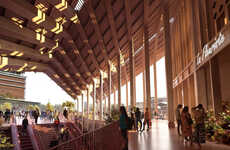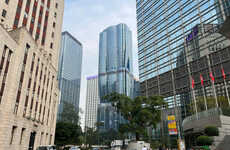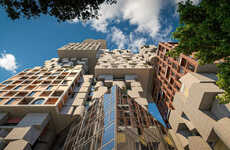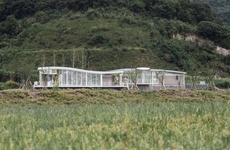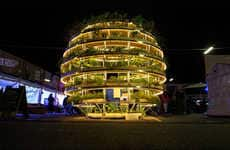
The AXA Building by Santiago Calatrava Will Be in a Train Station
Joey Haar — September 26, 2016 — Art & Design
The AXA building, designed by Santiago Calatrava, will be incorporated into Stadelhofen Station in Zurich, Switzerland. Capped by a triangle of turf and covered in a paneled steel facade, the building will add some modern vitality to the traditional architecture that surrounds the city's core.
Stadelhofen Station is itself a modern landmark of Zurich, having also been built by Santiago Calatrava in 1990. As such, it is fitting that the AXA building, commissioned by the Swiss insurance company of the same name, should have such a striking appearance.
Beyond pure form, the AXA building is designed to handle some mass transit issues that have arisen in Zurich. 80,000 commuters travel through Stadelhofen Station each day, and many of these people commute with bicycles. To combat bicycles that create an overcrowded plaza, the AXA building will have underground bike parking for more than 1,000 riders.
Stadelhofen Station is itself a modern landmark of Zurich, having also been built by Santiago Calatrava in 1990. As such, it is fitting that the AXA building, commissioned by the Swiss insurance company of the same name, should have such a striking appearance.
Beyond pure form, the AXA building is designed to handle some mass transit issues that have arisen in Zurich. 80,000 commuters travel through Stadelhofen Station each day, and many of these people commute with bicycles. To combat bicycles that create an overcrowded plaza, the AXA building will have underground bike parking for more than 1,000 riders.
Trend Themes
1. Green Roofs - Incorporating turf-topped buildings into urban architecture can promote the use of green roofs and help reduce the urban heat island effect.
2. Multi-functional Buildings - Designing buildings with additional functions like underground bike parking can provide solutions to issues faced by commuters.
3. Architectural Innovation - Architects can innovate through unique and visually striking designs, like the AXA building, that add modernity to traditional city centers.
Industry Implications
1. Architecture and Design - Architecture and design firms can incorporate green roof technology and multi-functional designs into their projects, leading to more sustainable and efficient urban spaces.
2. Real Estate Development - Real estate developers can capitalize on the growing demand for sustainable buildings that address modern-day commuting and environmental challenges.
3. Urban Planning - City planners can work with architects and developers to create innovative solutions that address transportation and environmental concerns while promoting sustainable growth.
3.8
Score
Popularity
Activity
Freshness



